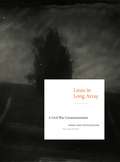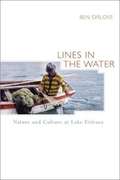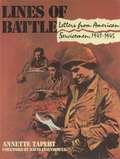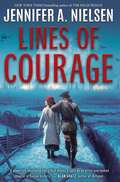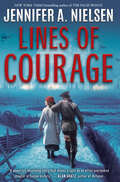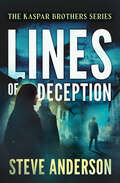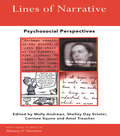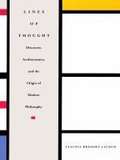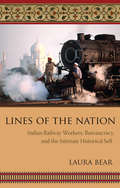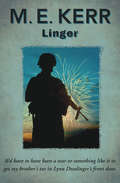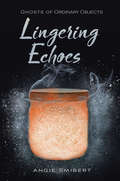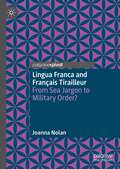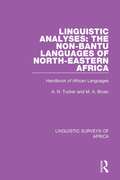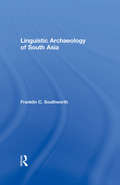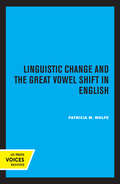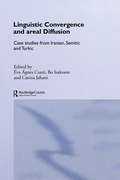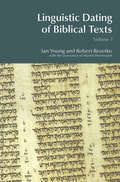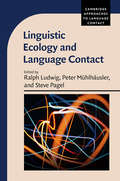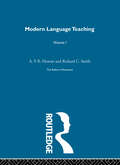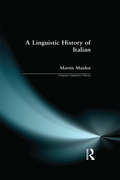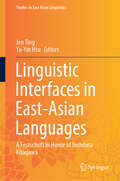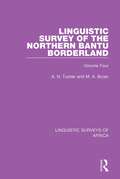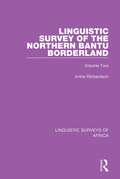- Table View
- List View
Lines in Long Array: A Civil War Commemoration: Poems and Photographs, Past and Present
by David C. Ward Frank H. Goodyear IIILines in Long Array demonstrates the enduring impact of the Civil War on American culture by presenting poems and photographs from both the past and present, including 12 wholly new poems by contemporary poets created especially for this volume.Includes previously unpublished poetry by Eavan Boland, Geoffrey Brock, Nikki Giovanni, Jorie Graham, John Koethe, Yusef Komunyakaa, Paul Muldoon, Steve Scafidi, Jr., Michael Schmidt, Dave Smith, Tracy K. Smith, and C. D. Wright. Also includes historic poems by Ethel Lynn Beers, Ambrose Bierce, George H. Boker, Emily Dickinson, Frances Ellen Watkins Harper, Oliver Wendell Holmes Sr., Julia Ward Howe, Herman Melville, Francis Orray Ticknor, Henry Timrod, Walt Whitman, and John Greenleaf Whittier.From the Trade Paperback edition.
Lines in the Water: Nature and Culture at Lake Titicaca
by Benjamin S. OrlovePart ethnography, part natural history, part memoir, Ben Orlove's book reflects on the changes that have taken place over 30 years in the fishing villages along the shores of Lake Titicaca.
Lines of Battle: Letters from American Servicemen, 1941-1945
by Annette TapertLetters from American Servicemen 1941-1945.
Lines of Courage
by Jennifer A. NielsenJennifer A. Nielsen, award-winning author of A Night Divided and Rescue, artfully weaves together the stories of five kids living through World War I, each of whom holds the key to the others' futures... if they are lucky -- and brave -- enough to find each other. <p><p> World War I stretches its cruel fingers across Europe, where five young people, each from different backgrounds and nations, face the terror of battle, the deprivations of hunger, and all the awful challenges of war. <p><p> Felix, from Austria-Hungary, longs for the bravery to resist Jewish deportations before his own family can be taken. <p><p> Kara, from Britain, dreams of someday earning her Red Cross pin and working as a nurse -- or even a doctor. <p><p> Juliette, of France, hopes her family can remain knitted together, despite her father's imprisonment, as the war's longest battle stretches on and on. <p><p> Elsa, from Germany, hopes her homing pigeon might one day bring her a friend from out of the chaos. <p><p> And Dimitri, of Russia, wants only to survive the front, where he's been sent with no weapon. <p><p> None of them will find exactly what they want. But the winds of fate may cross their paths to give each of them just what they need. And in this remarkable exploration of World War I by critically acclaimed author Jennifer A. Nielsen, they will discover that friendship and courage can light the way through the most frightening of nights.
Lines of Courage
by Jennifer A. NielsenJennifer A. Nielsen, award-winning author of A Night Divided and Rescue, artfully weaves together the stories of five kids living through World War I, each of whom holds the key to the others' futures... if they are lucky -- and brave -- enough to find each other."A powerful, absorbing story that shines a light on an often overlooked chapter in human history." -- Alan Gratz, #1 New York Times bestselling author of RefugeeWorld War I stretches its cruel fingers across Europe, where five young people, each from different backgrounds and nations, face the terror of battle, the deprivations of hunger, and all the awful challenges of war.Felix, from Austria-Hungary, longs for the bravery to resist Jewish deportations before his own family can be taken.Kara, from Britain, dreams of someday earning her Red Cross pin and working as a nurse -- or even a doctor.Juliette, of France, hopes her family can remain knitted together, despite her father's imprisonment, as the war's longest battle stretches on and on.Elsa, from Germany, hopes her homing pigeon might one day bring her a friend from out of the chaos.And Dimitri, of Russia, wants only to survive the front, where he's been sent with no weapon.None of them will find exactly what they want. But the winds of fate may cross their paths to give each of them just what they need. And in this remarkable exploration of World War I by critically acclaimed author Jennifer A. Nielsen, they will discover that friendship and courage can light the way through the most frightening of nights.
Lines of Deception (The Kaspar Brothers)
by Steve AndersonA West German nightclub owner goes behind the Iron Curtain on a desperate mission to save his brother, in this Cold War thriller by the author of Lost Kin.West Germany, 1949. Former actor Max Kaspar suffered greatly in the Second World War. Now he owns a nightclub in Munich—and occasionally lends a hand to the newly formed CIA. Meanwhile, his brother Harry has ventured beyond the Iron Curtain to rescue an American scientist. When Harry is also taken captive, Max resolves to locate his brother at all costs. The last thing he expects is for Harry to go rogue. Max&’s treacherous quest takes him to Vienna and Prague to Soviet East Germany and Communist Poland. Along the way, dangerous operators from Harry&’s past join the pursuit: his former lover Katarina, who&’s working for the Israelis, and former Nazi Hartmut Dietz, now an agent of East German intelligence. But can anyone be trusted? Even the American scientist Stanley Samaras may not be the hero Harry had believed him to be . . .
Lines of Fire: A Renegade Writes on Strategy, Intelligence, and Security
by Ralph PetersThe New York Times–bestselling military analyst offers a collection of essays covering a generation of geopolitics and military policy. For decades, Ralph Peters has been the most provocative and visionary American writer on military affairs, strategy, security, and intelligence. In that time, he predicted every major trend that has plagued the post-Cold-War world. A career military officer and acclaimed author, he has faced issues ranging from the explosion of religious terrorism to the fatal weaknesses of our intelligence system and our dangerous over-reliance on technology. Now Peters delves into these and other enduringly vital themes in this definitive, career-spanning collection of his writings. Lines of Fire is an indispensable volume for understanding today&’s crises—and tomorrow&’s.
Lines of Narrative: Psychosocial Perspectives (Routledge Studies in Memory and Narrative #Vol. 8)
by Molly Andrews Corinne Squire Amal Treacher Shelley Day SclaterThis volume brilliantly advances our understanding of the use of narrative in the social sciences. It brings together contemporary work on narrative theory and methods and presents a fascinating range of case-studies, from Princess Diana's Panorama interview to the memoirs of the wives of US nuclear scientists.
Lines of Thought: Discourse, Architectonics, and the Origin of Modern Philosophy
by Claudia Brodsky LacourIt is considerably easier to say that modern philosophy began with Descartes than it is to define the modernity and philosophy to which Descartes gave rise. In Lines of Thought, Claudia Brodsky Lacour describes the double origin of modern philosophy in Descartes's Discours de la méthode and Géométrie, works whose interrelation, she argues, reveals the specific nature of the modern in his thought. Her study examines the roles of discourse and writing in Cartesian method and intuition, and the significance of graphic architectonic form in the genealogy of modern philosophy.While Cartesianism has long served as a synonym for rationalism, the contents of Descartes's method and cogito have remained infamously resistant to rational analysis. Similarly, although modern phenomenological analyses descend from Descartes's notion of intuition, the "things" Cartesian intuitions represent bear no resemblance to phenomena. By returning to what Descartes calls the construction of his "foundation" in the Discours, Brodsky Lacour identifies the conceptual problems at the root of Descartes's literary and aesthetic theory as well as epistemology. If, for Descartes, linear extension and "I" are the only "things" we can know exist, the Cartesian subject of thought, she shows, derives first from the intersection of discourse and drawing, representation and matter. The crux of that intersection, Brodsky Lacour concludes, is and must be the cogito, Descartes's theoretical extension of thinking into material being. Describable in accordance with the Géométrie as a freely constructed line of thought, the cogito, she argues, extends historically to link philosophy with theories of discursive representation and graphic delineation after Descartes. In conclusion, Brodsky Lacour analyzes such a link in the writings of Claude Perrault, the architectural theorist whose reflections on beauty helped shape the seventeenth-century dispute between "the ancients and the moderns."Part of a growing body of literary and interdisciplinary considerations of philosophical texts, Lines of Thought will appeal to theorists and historians of literature, architecture, art, and philosophy, and those concerned with the origin and identity of the modern.
Lines of the Nation: Indian Railway Workers, Bureaucracy, and the Intimate Historical Self (Cultures of History)
by Laura BearLines of the Nation radically recasts the history of the Indian railways, which have long been regarded as vectors of modernity and economic prosperity. From the design of carriages to the architecture of stations, employment hierarchies, and the construction of employee housing, Laura Bear explores the new public spaces and social relationships created by the railway bureaucracy. She then traces their influence on the formation of contemporary Indian nationalism, personal sentiments, and popular memory. Her probing study challenges entrenched beliefs concerning the institutions of modernity and capitalism by showing that these rework older idioms of social distinction and are legitimized by forms of intimate, affective politics. Drawing on historical and ethnographic research in the company town at Kharagpur and at the Eastern Railway headquarters in Kolkata (Calcutta), Bear focuses on how political and domestic practices among workers became entangled with the moralities and archival technologies of the railway bureaucracy and illuminates the impact of this history today. The bureaucracy has played a pivotal role in the creation of idioms of family history, kinship, and ethics, and its special categorization of Anglo-Indian workers still resonates. Anglo-Indians were formed as a separate railway caste by Raj-era racial employment and housing policies, and other railway workers continue to see them as remnants of the colonial past and as a polluting influence. The experiences of Anglo-Indians, who are at the core of the ethnography, reveal the consequences of attempts to make political communities legitimate in family lines and sentiments. Their situation also compels us to rethink the importance of documentary practices and nationalism to all family histories and senses of relatedness. This interdisciplinary anthropological history throws new light not only on the imperial and national past of South Asia but also on the moral life of present technologies and economic institutions.
Linger
by M. E. KerrIn this novel by the award-winning author of Gentlehands and Slap Your Sides, a teenager starts to look at life differently when his older brother is sent to the Persian GulfTo sixteen-year-old Gary Peel, Linger is home. His father is manager of the Pennsylvania restaurant; his mom takes care of the books; and Gary's older brother, Bobby, works there as a waiter. That is, until he decides to join the army.The only one from their hometown to enlist, Bobby becomes an instant hero. At Linger, Gary takes Bobby's place waiting tables--and finds himself drawn into the correspondence between his brother and Lynn Dunlinger, the beautiful, preppy daughter of the restaurant's owner. The tone of Bobby's letters starts to change when he's suddenly shipped overseas. Gary--the brother left behind--tries to adjust to his new life and prepares for the first Christmas without Bobby.Set during the Gulf War crisis and featuring a diverse cast of characters, Linger interweaves Gary's first-person narrative with Bobby's letters and journal entries from Saudi Arabia in a multifaceted look at bigotry, power, and the valor under fire that can drive ordinary people to commit extraordinary acts. This ebook features an illustrated personal history of M. E. Kerr including rare images from the author's collection.
Lingering Echoes (Ghosts of Ordinary Objects)
by Angie SmibertTwelve-year-old Bone uses her Gift, which allows her to see the stories in everyday objects, to try to figure out why her best friend, Will Kincaid, suddenly lost his voice at age five. This supernatural historical mystery is the second title in the acclaimed and emotionally resonant Ghosts of Ordinary Objects series. In a southern Virginia coal-mining town in October 1942, Bone Phillips is learning to control her Gift: Bone can see the history of a significant object when she touches it. When her best friend, Will Kincaid, asks Bone to "read" the history of his daddy's jelly jar--the jelly jar that was buried alongside his father during the mine cave-in that killed him--Bone is afraid. Even before Bone touches it, she can feel that the jar has its own strange power. With her mother dead, her father gone to war, and Aunt Mattie's assault looming over Bone, she can't bear the idea of losing Will too. As Will's obsession with the jelly jar becomes dangerous, Bone struggles to understand the truth behind the jar and save him Featuring a beautiful, compelling voice, this novel weaves a story of mystery, family, and ultimately, love.
Lingua Franca and Français Tirailleur: From Sea Jargon to Military Order?
by Joanna NolanThis book explores how the eponymous and original Lingua Franca was recognized as a potential linguistic template for future military and colonial pidgins. The author traces the career trajectory of General Louis Faidherbe, a member of the French colonizing force in Algiers in the early 1830s and a recognized linguist, who rose up through the ranks in various African colonies and was the founder of regiments in West Africa, including the Senegal-based tirailleurs. Their artificially constructed military pidgin, Français Tirailleur, was a language modelled on the reduced grammar and lexicon of Lingua Franca. This book demonstrates the direct link between the two languages, as well as connections with other colonial pidgins in Asia that also derived to some extent from Lingua Franca. It will be of interest to students and scholars of language contact and language history, pidgins and creoles, and military and colonial history.
Linguistic Analyses: Handbook of African Languages (Linguistic Surveys of Africa #18)
by M. A. Bryan A. N. TuckerThis book, originally published in 1966, deals mainly with morphemes and with grammatical and syntactic behaviour. Although some vocabulary material is contained in this volume, and some more in the Linguistic Survey of the Northern Bantu Borderland, vocabulary comparison itself plays little part. The volume presents an overall picture of the working of representative languages from each section of the Handbook and provides grammatical material which will help future students in classifying the languages to their typological as apart from their lexical features.
Linguistic Archaeology of South Asia
by Franklin SouthworthThis book brings together linguistic and archaeological evidence of South Asian prehistory. The author depicts and analyses the region, in particular the Indus Valley civilization, its links with neighbouring regions and its implications for social history. Each type of linguistic data is put into its socio-historical context. Consequently, the book is both a description of the unique methodology 'linguistic archaeology' and a treatment of South Asian linguistic data.
Linguistic Change and the Great Vowel Shift in English
by Patricia M. WolfeThis title is part of UC Press's Voices Revived program, which commemorates University of California Press’s mission to seek out and cultivate the brightest minds and give them voice, reach, and impact. Drawing on a backlist dating to 1893, Voices Revived makes high-quality, peer-reviewed scholarship accessible once again using print-on-demand technology. This title was originally published in 1972.
Linguistic Convergence and Areal Diffusion: Case Studies from Iranian, Semitic and Turkic
by Éva Ágnes Csató Bo Isaksson Carina JahaniThe authors are outstanding scholars engaged in the study of language varieties spoken in 'convergence areas' in which speakers are multilingual in languages of at least two but sometimes all three language families. Many of the contributions present new data collected in fieldwork. The geographic area covered is Western and Central Asia where varieties of Iranian, Semitic and Turkic languages have entered into many different types of contact. The intricate linguistic contact situations demonstrate highly interesting convergence phenomena.
Linguistic Dating of Biblical Texts: Vol 1 (BibleWorld #1)
by Ian Young Robert RezetkoSince the beginning of critical scholarship, biblical texts have been dated using linguistic evidence. In recent years, this has been a controversial topic. However, until now, there has been no introduction to and comprehensive study of the field. Volume I introduces the field of linguistic dating of biblical texts, particularly to intermediate and advanced students of Biblical Hebrew with a reasonable background in the language, but also to scholars of the Hebrew Bibles in general who have not been exposed to the full scope of issues. It outlines topics at a basic level before entering into detailed discussion. Many text samples are presented for study, and readers are introduced to significant linguistic features of the texts through notes on the pages. Detailed notes on these text sample provide a background, concrete illustrations and a point of departure for discussion of the general and theoretical issues discussed in each chapter that will make this volume useful as a classroom textbook.
Linguistic Ecology and Language Contact (Cambridge Approaches to Language Contact)
by Peter Mühlhäusler Ralph Ludwig Steve PagelContributions from an international team of experts revisit and update the concept of linguistic ecology in order to critically examine current theoretical approaches to language contact. Language is understood as a part of complex socio-historical-cultural systems, and interaction between the different dimensions and levels of these systems is considered to be essential for specific language forms. This book presents a uniform, abstract model of linguistic ecology based on, among other things, two concepts of Edmund Husserl's philosophy (parts and wholes, and foundation). It considers the individual speaker in the specific communication situation to be the essential heuristic basis of linguistic analysis. The chapters present and employ a new, transparent and accessible contact linguistic vocabulary to aid reader comprehension, and explore a wide range of language contact situations in Europe, Africa, the Middle East, Latin America, Asia and the Pacific. This book will be fascinating reading for students and researchers across contact linguistics and cultural studies.
Linguistic Foundations: The Reform Movement (Logos Studies in Language and Linguistics)
by Richard C. Smith A. P. R. HowattThis volume forms part of a five volume set charting the progress of the nineteenth century movement which was instrumental in establishing international guidelines for the teaching of modern languages. It was during this period that for the first time, co-operation between phoneticians and teachers culminated in the publication of works that were instrumental in establishing the 'applied linguistic' approach to language teaching in the twentieth century. For the first time, too, the new science of psychology influenced a scientific theory of second language acquisition. The Reform Movement attracted support across Europe, spurring the development of new professional associations and journals. In turn, the publication in these journals of reports of innovative practice contributed to a greater sense of autonomy and professionalism among modern language teachers, who had hitherto tended to live under the shadow of classical language teaching. The practical innovations and theoretical suggestions for the foreign language teaching, although rooted in the nineteenth century, still have relevance today.
Linguistic History of Italian, A (Longman Linguistics Library)
by Martin MaidenA Linguistic History of Italian offers a clear and concise explanation of why modern Italian grammar has become the way it is. It focuses on the effects of historical changes on the modern structure of Italian, revealing patterns and structures which are not always apparent to those who are only familiar with modern Italian. Although the book concentrates on the internal history of the language, the emergence of Italian is considered against the wider background of the history of italian dialects, and other external factors such as cultural and social influences are also examined.
Linguistic Interfaces in East-Asian Languages: A Festschrift in Honor of Yoshihisa Kitagawa (Studies in East Asian Linguistics)
by Yu-Yin Hsu Jen TingThis book contains new research essays of linguistic interface studies in or related to East Asian languages. Written by 14 colleagues or former students of Yoshihisa Kitagawa, it is also a book paying tribute to his decades of scholarships on linguistic interface studies. The chapters therein range from interface studies in syntax and other linguistic areas such as morphology, phonology, semantics, pragmatics, language acquisition, language evolution, and language faculty science. The languages under discussion are mainly East Asian languages such as Chinese, Japanese, and Korean, but also include Jordanian Arabic and Spanish, under comparative studies with respect to East Asian languages. The book appeals to both seasoned and novice researchers in linguistics, East Asian languages, and modern languages.Chapters “Bare Quotatives as Embedded SpeechActs”, “Re: The Interpretive Functions of the So-Called Japanese Topic Marker Wa” and “Focus Inside: Evidence from Spanish and Chinese” are available open access under a Creative Commons Attribution 4.0 International License via link.springer.com.
Linguistic Survey of the Northern Bantu Borderland: Volume Four (Linguistic Surveys of Africa #9)
by M. A. Bryan A. N. TuckerThe classification and distribution of the languages of the Northern Bantu Borderland between the Great Lakes and the Indian Ocean have been given in Volume 1 of The Linguistic Survey of the Northern Bantu Borderland, where however, the linguistic evidence on which the classification rested was not included. This is now set out in this volume, originally published in 1957. The languages have been divided into three categories: Bantu, partly Bantu and non-Bantu. within each category the languages have been grouped according to linguistic criteria. The choice of languages represented here has been determined by the availability of reliable linguistic material.
Linguistic Survey of the Northern Bantu Borderland: Volume One (Linguistic Surveys of Africa #7)
by A. N. Tucker Malcolm GuthrieThe northern limit of the Bantu languages is one of the important linguistic boundaries of Africa and this and the subsequent 3 volumes provide an invaluable resource which delimits the frontier. Since a number of the languages investigated had not hitherto been recorded, while with others the published information was inadquate and confused the Linguistic Survey of the Northern Bantu Borderland can justifiably be described as a pioneering study. This volume consists of demographic information together with maps and tabulated indications of the affinities of the languages.
Linguistic Survey of the Northern Bantu Borderland: Volume Two (Linguistic Surveys of Africa #8)
by Irvine RichardsonThis volume, originally published in 1957, contains the linguistic evidence for the classification of the languages encountered by the western team of the Northern Bantu Borderland Survey. To appreciate fully its implications it should be read in close conjunction with the appropriate sections of Volume 1 of the Survey, dealing with the demography of this area. The inclusion of some languages over others in this volume in no way reflects its demographic or linguistic importance, but simply indicates that the evidence was available to the Survey. The material is original and except where otherwise indicated was taken down by the team in phonetic script from local informants in situ.
